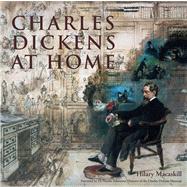
The New copy of this book will include any supplemental materials advertised. Please check the title of the book to determine if it should include any access cards, study guides, lab manuals, CDs, etc.
The Used, Rental and eBook copies of this book are not guaranteed to include any supplemental materials. Typically, only the book itself is included. This is true even if the title states it includes any access cards, study guides, lab manuals, CDs, etc.
HOUSEHOLDS AND SERVANTS
Perhaps Charles Dickens owes his storytelling genius to his grandmother, Elizabeth Dickens. Elizabeth had been a maid to Lady Blandford in Grosvenor Square, but after marrying William Dickens, the butler for Lord Crewe, she had become housekeeper for the Crewe family, and the greatest treat for the Crewe children, Henrietta and Arabella (as Arabella recalled in her adulthood), was to be allowed to make their way to the housekeeper's room, where they listened in rapt attention to 'old Mrs Dickens'. She worked until she was 75, ending her days in a house in Oxford Street, then a residential street. Though she didn't die until Charles was 12, her skills were not recorded through the Dickens' family: indeed, the fact that his grandparents were upper-servants in an aristocratic household was one that, along with Warrens blacking factory, was suppressed until late in his life.
It is, however, an interesting background to this most accomplished of storytellers, whose servant characters are often sympathetic and as strong as the main protagonist. Where, for example, would Mr Pickwick be without Sam Weller? And where might Sam Weller be without Mary Weller? Mary Weller was the name of the servant (one of two) in the Chatham household, a young girl who recorded some of the earliest memories of the young Charles. A nod to her presence in his mind was perhaps made when he called his first, faithful, servant Weller. And Sam Weller's bride 'the very smart and pretty-faced servant girl' was also called Mary.
When the family moved from Chatham to London, Mary stayed behind and married a shipwright from the dockyard. Accompanying the family to Bayham Street in London, was an orphan girl from the Chatham workhouse, a memory Dickens drew on for the Marchioness in The Old Curiosity Shop.
The matter of servants was of mainly academic - or fictional - interest to Charles, until he maintained his own household. There is a mention of one when he was living at 15 Furnival Inn in 1835 in a letter to John Macrone, who published Sketches of Boz, one November Saturday morning at 5 o'clock, that also gives an insight into his daily life:
I am writing by candlelight shivering with cold and choaked with smoke. The fire (which has been fed like a furnace at the gas works all night, with a view of my 'early breakfast' has turned unaccountably white and dusty at the very moment when it ought to boil the kettle... I think it's rather a disagreeable morning but I can't say exactly - because it's so foggy. My laundress who is asthmatic has dived into a closet - I suppose to prevent her cough annoying me - and is emitting from behind the door an uninterrupted succession of the most unearthly and hollow noises I have ever heard.'
Perhaps the same laundress was employed in the first marital home in Furnival's Inn. But certainly when the Dickens family moved to Doughty Street in 1836, there was a need for more staff. There were 'tweenies', as they were known, from the orphanage, to act as scullery maids for a wage of 2/- or 2/6d, and there must certainly have been the need for a nurse, since two babies were born there. There would have been a cook, housemaid, and later a groom or manservant: looking at Dickens' account book one can get an idea of the personnel and the wages: the nurse's monthly wage was between £3 and £4 5s; the cook was paid £3 13 6 per month in 1838; housemaids were paid 2.5 guineas in 1838, rising to 3 guineas in January 39.
By the time his second son Walter was born, his household had expanded considerably: in the 1841 census return for that year, he described himself as 'Gentleman', and declared his household at 1 Devonshire Terrace as consisting of wife and four children, four maid-servants and one man-servant. His stock had certainly risen.